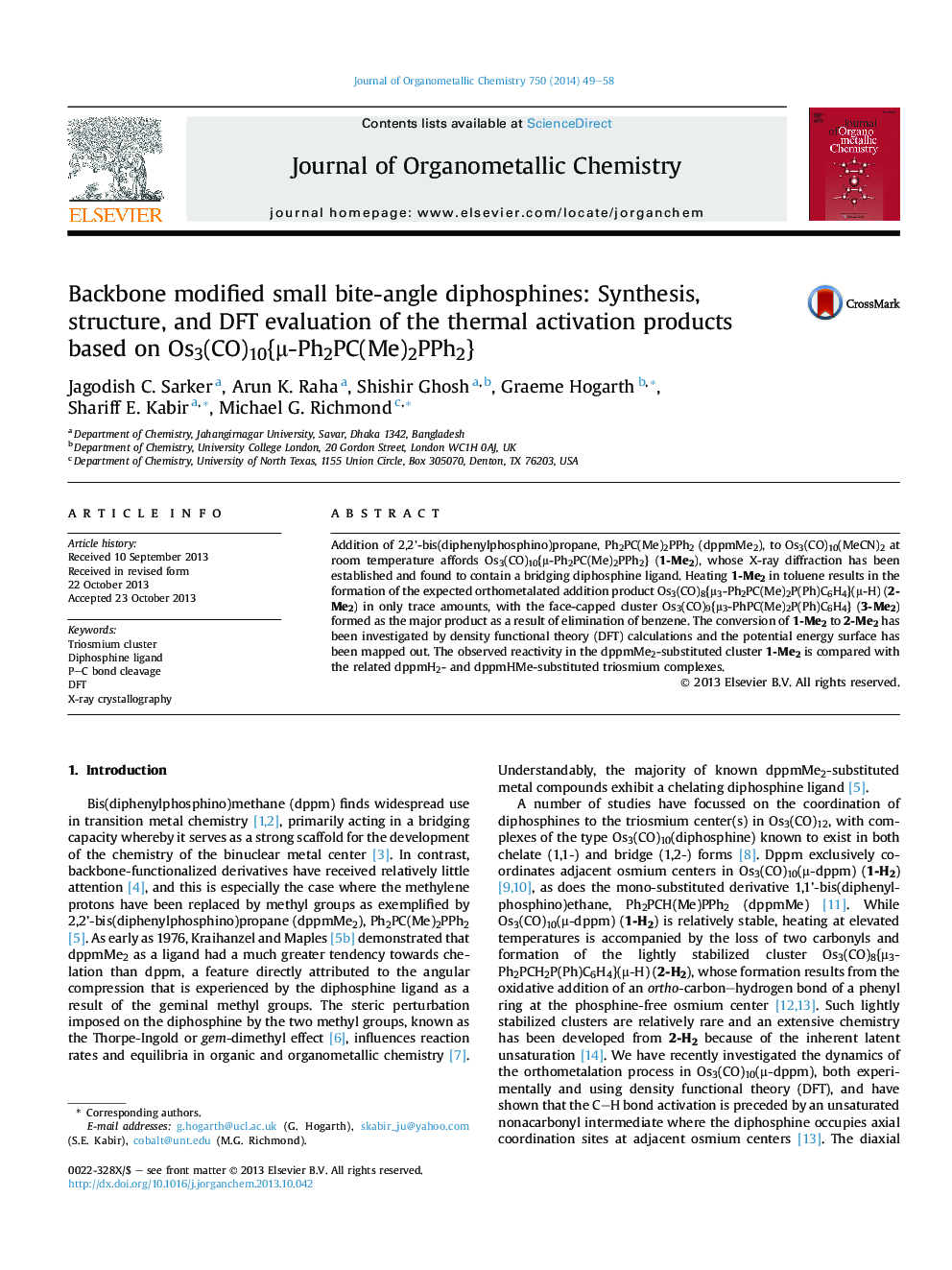| Article ID | Journal | Published Year | Pages | File Type |
|---|---|---|---|---|
| 1322545 | Journal of Organometallic Chemistry | 2014 | 10 Pages |
•Rare isolation of bridging 2,2'-bis(diphenylphosphino)propane complex.•Crystallographic characterization allowing comparison with related clusters.•Thermolytic studies leading to selective P–C bond activation.•DFT calculations mapping out potential energy surface.
Addition of 2,2'-bis(diphenylphosphino)propane, Ph2PC(Me)2PPh2 (dppmMe2), to Os3(CO)10(MeCN)2 at room temperature affords Os3(CO)10{μ-Ph2PC(Me)2PPh2} (1-Me2), whose X-ray diffraction has been established and found to contain a bridging diphosphine ligand. Heating 1-Me2 in toluene results in the formation of the expected orthometalated addition product Os3(CO)8{μ3-Ph2PC(Me)2P(Ph)C6H4}(μ-H) (2-Me2) in only trace amounts, with the face-capped cluster Os3(CO)9{μ3-PhPC(Me)2P(Ph)C6H4} (3-Me2) formed as the major product as a result of elimination of benzene. The conversion of 1-Me2 to 2-Me2 has been investigated by density functional theory (DFT) calculations and the potential energy surface has been mapped out. The observed reactivity in the dppmMe2-substituted cluster 1-Me2 is compared with the related dppmH2- and dppmHMe-substituted triosmium complexes.
Graphical abstractOs3(CO)10{μ-Ph2PC(Me)2PPh2} (1-Me2) has been prepared and its thermolytic behavior compared to related diphosphine-bridged complexes both experimentally and by DFT studies. Heating 1-Me2 gives the expected orthometalated addition product Os3(CO)8{μ3-Ph2PC(Me)2P(Ph)C6H4}(μ-H) (2-Me2) in only trace amounts, with benzene loss and formation of the faced-capped cluster Os3(CO)9{μ3-PhPC(Me)2P(Ph)C6H4} (3-Me2) being the major reaction route.Figure optionsDownload full-size imageDownload as PowerPoint slide
